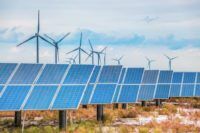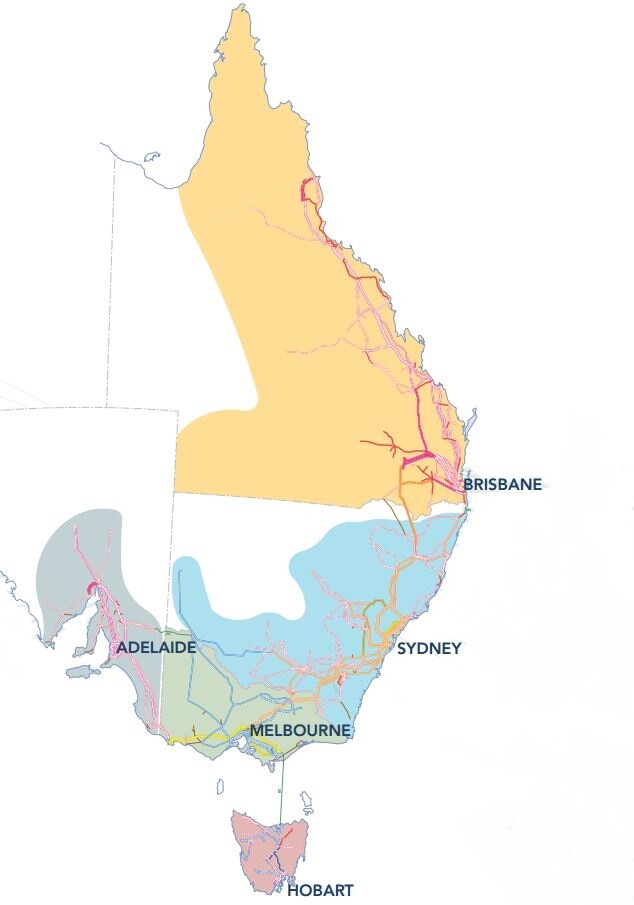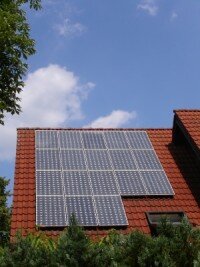GreenPower is an attractive option for Australian households who want to support renewable energy production. Is opting for GreenPower a better idea than installing rooftop solar? In this article we take a look at how both options support renewables uptake, and examine the pros and cons of opting for one, the other – or both.
What is GreenPower?
GreenPower is a government-certified way to support the uptake of renewable energy in Australia. Signing up for GreenPower involves paying a premium on your electricity bill to meet a portion of your energy needs with renewables. The GreenPower program predates Australia’s Renewable Energy Target (RET), but today the two function alongside on another to increase the amount of renewable energy nationwide.
Compare solar & battery storage quotes from installers in your area!
Compare Solar & Battery Quotes
 How does GreenPower work?
How does GreenPower work?
The RET promotes uptake of renewable energy in Australia by creating a market for renewable energy generation where the currency is renewable energy certificates (RECs). Big polluters and electricity retailers (known as ‘liable entities’ under the RET) are required to surrender a certain amount of these certificates every year, in accordance with the amount of energy they sell or consume. They can either purchase these certificates direct from third-party generators, buy them on the certificate market, or build renewables plants and generate them themselves.
Each megawatt-hour (MWh) of renewable energy generated by an accredited power plant is associated with a renewable energy certificate. In the case of larges-scale plants (over 100 kilowatts, kW), these certificates are called large-scale generation certificates (LGCs). For systems up to 100kW, they’re called small-scale technology certificates (STCs). Only LGCs are used for GreenPower (and right now they are very expensive).
By purchasing GreenPower, you are effectively removing LGCs from circulation, so that the renewable energy they represent becomes additional to any generated under the RET. As people voluntarily purchase GreenPower, demand for certificates increases and more renewable energy plants need to be built to supply more certificates.
 Do you get GreenPower in ‘real-time’?
Do you get GreenPower in ‘real-time’?
The market for renewable energy certificates is only distantly related to the wholesale electricity spot price on the National Electricity Market (NEM). NEM spot prices change in (almost) real time, representing real energy transactions in half-hourly segments.
For a household to be able to purchase renewables in real-time, they would have to somehow conduct transactions directly on the NEM, paying only renewable energy generators for their electricity. There is currently no mechanism for this to take place (although a startup called LocalVolts is developing a platform that aims to make it possible).
 Small-scale solar & GreenPower
Small-scale solar & GreenPower
The entities liable under the RET are required each year to source a certain amount of their certificates as small-scale certificates (STCs). This is the mechanism through which the RET supports small-scale solar power.
Usually, when you get solar installed on your roof, the STCs associated with your system are immediately passed to your installer, and their value is applied to the out-of-pocket price of your system (and should be itemised on your contract/invoice). In this way, STCs provide an indirect discount on the cost of your system – and help to support uptake of small-scale renewable energy in Australia.
The ‘small-scale percentage’ determines the number of STCs that liable entities must surrender each year. Unlike the large-scale side of the scheme, whose annual targets are prescribed in legislation, the small-scale percentage is adjusted yearly, depending on the anticipated small-scale renewables market for the coming year.
This means that removing STCs from the pool does not have the same impact on renewables uptake as removing LGCs. In short, if you go solar, you are directly increasing the amount of renewable energy in Australia (and not simply contributing to the pre-established target).
Furthermore, although each STC is a certificate representing 1MWh of renewable energy in the same way that an LGC does, STCs are not used for GreenPower.
So should I go solar or get GreenPower?
If you’re tossing up between GreenPower and rooftop solar because of their relative environmental merits, they will effectively do the same thing; 1 megawatt hour of renewable energy from a small-scale system is still a megawatt-hour of renewable energy. That being said, there are many noteworthy differences between the two (which, by the way, aren’t mutually exclusive).
One issue that many people may take with GreenPower (once they fully understand it) is that the impact of the scheme is rather intangible. When you opt for GreenPower electricity, you don’t get 50% or 100% renewable energy delivered to your home in real-time – which is what effectively happens through the NEM. Instead, you are purchasing renewable energy certificates associated with energy that may very well have been generated last year or earlier. Additionally, you have no idea if the energy produced came from a solar farm, wind farm, hydro plant – or even which state it was generated in. That being said, GreenPower is a good option for households who want to support renewable energy, but do not want the up-front investment in a solar system or do not have viable roof space of their own to install solar panels.
Rooftop solar, meanwhile, is not only a great way to support renewable energy, but also an investment and a way to save money and increase your energy independence. Rooftop solar has become commonplace in Australia thanks to its affordability, and its benefits are widely understood and appreciated among Australian homeowners. The biggest downsides to rooftop solar are that anyone interested in going solar must first have a roof to install panels on and the cash (or credit line) to purchase a system.
In the two tables below, we outline the main differences – and points of overlap – between GreenPower and on-site solar.
GreenPower vs going solar
| Purchase GreenPower | Go solar | |
| Environmental benefits | Supports the generation of renewable energy through a certificate market, displacing fossil fuel generation for up to 100% of your energy consumption | Depending on size of system, can generate enough energy to offset fossil fuel generation, whether you consume it yourself or send it into the grid |
| Tangibility / Directness | Certificates used as renewable energy ‘currency’; does not support renewable energy generation in real-time; no way to know origin of the energy associated with certificates | Solar energy generated on your rooftop when the sun is shining; monitoring apps allow easy access to real-time data |
| Savings vs costs | Net cost – increase on electricity bill | Initial investment required, but net savings over the medium to long-term (with payback periods under 5 years) |
| Ongoing commitment | GreenPower commitment can usually be cancelled or reduced at any time | Solar system will continue to function for 25+ years; system owner is usually responsible for occasional and routine maintenance (and associated costs) |
Go solar, get GreenPower – or both?
| No GreenPower | Get GreenPower | |
| No solar | Least green option (but not necessarily lowest cost over several years compared to ‘Get Solar’ options) | Depending on degree of GreenPower purchased and household energy consumption, bills may be significantly higher (but best option for homes with no space for solar who want to support large-scale renewables) |
| Get solar | Opportunity to meet a portion of home’s energy needs directly from solar panels (up to nearly 100% with battery storage) and reduce energy bills substantially; additional purchase of electricity from grid at standard retail rates | Greenest option: up to nearly 100% of energy needs met locally with solar (and batteries) while any grid energy purchased supports large-scale renewables; may come at slightly higher cost than ‘No GreenPower/Get Solar’ option |
GreenPower cost estimator tool
The calculator below allows users to estimate GreenPower costs over time. Please note that it does not account for electricity price inflation or changes to the cost of GreenPower. Additionally, some plans may offer GreenPower at different percentage points (e.g. 20% and 60% instead of 10% and 50%).
As can be seen in the default details below, the cost of purchasing 100% GreenPower over 14 years could potentially on par with purchase of a modestly-sized solar PV system (around 4kW). Purchase of a solar system of this size could easily save the household well over $10,000 over the course of the same 14 years – all while supporting renewable energy (albeit small-scale solar as opposed to large-scale solar, wind or hydro).
Try it yourself: Enter your details in the tool below
In conclusion
It’s fairly clear that rooftop solar is the best choice for households with the roof space and the budget to have solar panels installed, as the environmental benefits are roughly equal and the cost savings will be greater than with GreenPower. That being said, GreenPower is still a good option for homes that want to support clean energy but can’t go solar.
Furthermore, even for homes that do go solar (and install battery storage), GreenPower is a great way to ’round out’ the renewable energy generated on site with a renewable offset for the remainder of the electricity purchased from the grid. So if you’re thinking about getting solar – or have already gone solar – don’t rule GreenPower out.
Compare solar & battery storage quotes
Compare Solar & Battery Quotes
Further resources:
Read our article: Does solar power make sense in 2017?
See current & historic solar system price ranges for each capital city: Solar Choice’s PV Price Index
See the rest of our calculators in our Calculator Resource Library
© 2017 Solar Choice Pty Ltd
- Solar Panel Costs: Solar Choice Price Index | April 2025 - 1 April, 2025
- Solar Panels For Homes – All You Need to Know About Solar Systems - 18 March, 2025
- Best NSW Solar Feed-In Tariffs - 17 March, 2025